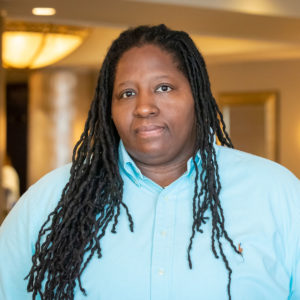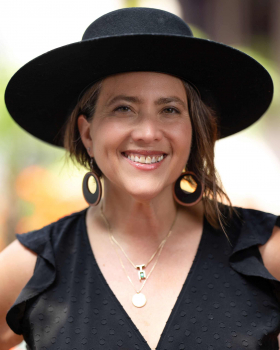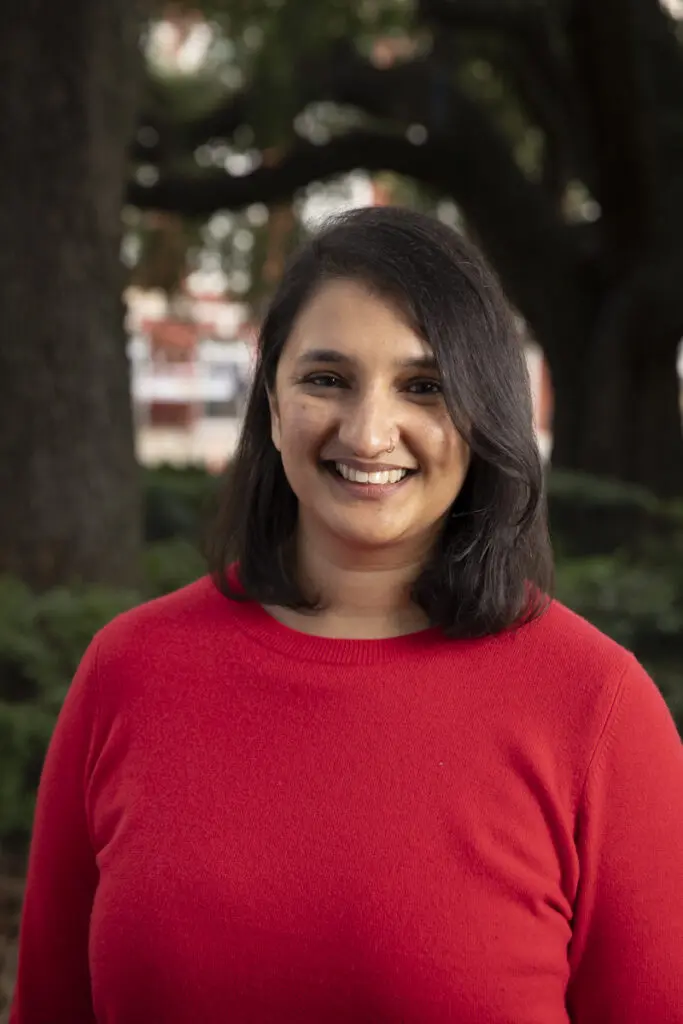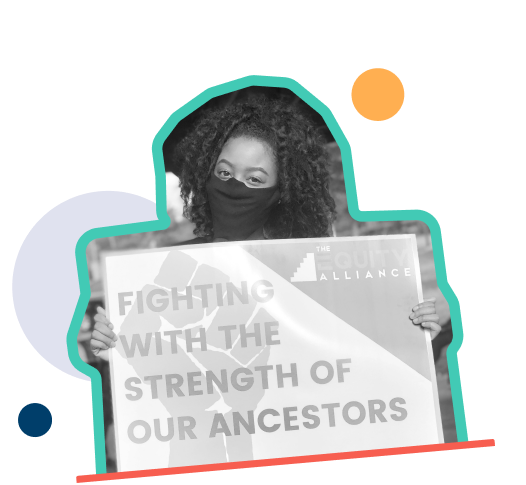BY Dion Cartwright, President & CEO, The Funders Network | Ansje Miller, Executive Director, Health and Environmental Funders Network | Manisha Vaze, Vice President of Programs, Neighborhood Funders Group
The single largest public investment in our lifetime to improve America’s infrastructure and climate resilience is underway. Nearly $500 billion has already been awarded to states, Tribes, territories, and local governments across the U.S. to improve roads, bridges, and water systems and develop clean energy projects.
All told, $1.8 trillion in grants, tax credits, and other financial assistance will be available in the coming years through the Infrastructure Investment and Jobs Act and Inflation Reduction Act – all part of the Biden administration’s promise to deliver the most ambitious environmental justice and workforce development agenda in our nation’s history.
These funds present a once-in-a-generation opportunity to inject much-needed resources into frontline communities, namely low-wealth communities and communities of color already grappling with the impacts of pollution, failing infrastructure, limited access to sustainable careers, and an escalating climate crisis.
But growing political polarization around climate investments and a potential change in administrations puts these funds at grave risk. Meanwhile, actually getting federal dollars into the hands of those best positioned to understand and address these needs – the grassroots organizations led by people who live and work in historically and systemically disinvested communities – is easier said than done.
Barriers to Access
The irony is that due to the way that government grant programs have been historically run, those best positioned to do meaningful work with these funds often lack the capacity and resources to qualify or even apply for federal grants, a notoriously labyrinthine process that can flummox even the most seasoned professional grant writer.
Most often, federal grants go to corporate entities and larger NGOs that have already built organizational capacity to access funding but do not always have the best connection and understanding of the community’s needs and interests. This threatens the ability of these funds to achieve the equity goals of these programs and implement infrastructure, economic, and workforce development projects in alignment with the needs of the communities they are intended to serve.
With these challenges and threats mounting, it’s more urgent than ever for philanthropy to come together and supercharge grassroots groups’ capacity to access funds and get projects going.
Use Your Collective Power
As the leaders of philanthropy-supporting organizations committed to encouraging and empowering our members to center racial and economic justice and community-led climate and environmental health solutions in their grantmaking, we believe that funders are uniquely positioned to help move much-needed resources to places and people short-changed by historic disinvestment and systemic injustice.
Funders, including place-based community and regional foundations, need to move with urgency and purpose and use their collective power to help community-led groups build the organizational muscle needed to access federal dollars and get projects going.
That support can show up in myriad ways, and there are promising examples across the country of funders stepping up efforts to help overcome barriers to unlocking federal funding. A report released last week by Invest in Our Future found that a group of 33 funders — including several members of our respective networks — had provided more than $230 million to help nonprofits and communities with projects related to the Inflation Reduction Act.
We are heartened that so many funders are heeding the call. Over the past several months, we’ve convened virtual and in-person gatherings with hundreds of philanthropic, grassroots, and government leaders from around the U.S. to share what they are doing, learning, and need from each other to unlock funds and move projects forward.
These exchanges have revealed a number of best practices philanthropy can follow to play a collective and decisive role in not only distributing federal dollars to frontline communities, but also making sure infrastructure and climate projects are designed equitably from start to finish.
Here are five recommendations that rise to the top:
1. Boost the operating muscle of grassroots groups
The influx of federal funding opportunities and flurry of developing projects requires a special level of organizational capacity that few NGOs have, let alone smaller, grassroots organizations.
Philanthropies can help boost community-based organizations’ (CBOs) ability to access funding and get projects off the ground by providing financial support to hire grant writers, paying for accounting services and tools, covering staff travel costs to attend agency meetings, providing general operating funds, and more.
Funders and funder-supported initiatives helping boost CBO capacity include Heinz Endowments’s new Southwest Pennsylvania Technical Assistance Hub, California-based funder collaborative Community Economic Mobility Initiative, the Justice40 Accelerator, Just Transition Fund’s Federal Access Center, the Heartland Fund’s Resource Rural project, and Environmental Protection Network, which harnesses the expertise of former EPA career staff and political appointees to provide pro bono technical assistance to community groups seeking and implementing federal funds.
2. Create connections, open doors
Funders have connections with other grantors and government agencies that smaller grassroots organizations might not. Likewise, government agencies need to hear and learn more from organizations working directly with frontline communities.
Philanthropic organizations can help open doors and provide opportunities for CBOs, funders, and government officials to form new and stronger relationships and improve coordination around federal funding opportunities.
Funders working to create connections include Communities First Fund, which hosted three regional convenings last fall in partnership with our organizations to connect CBOs with regional funders and agency officials to explore ways they can work together to unlock federal funds and get projects moving, and Merck Family Fund and Barr Foundation, which are hosting similar convenings in New England states.
3. Expand funding horizons and strategies
While this funding opportunity is time-limited, philanthropy should hold a long view.
For frontline communities to see the full benefits of federal funding, investments — both federal and philanthropic — must be made to span generations, not administrations. To unleash true community potential, funders should break away from merely funding issues and projects, and start to provide bigger, holistic, and multi-year grants, unrestricted funding, wealth and asset-building grants, debt capital support, bridge funding, and other strategic and long-term support.
Funders taking an expansive view include Barr Foundation, which shifted how its climate program awards funds to providing general operating support, eased its application and reporting requirements and is intentionally moving grants to organizations led by Black, Indigenous, or other people of color. Other examples include McKnight Foundation, which is helping create green banks in the Midwest to finance clean energy projects, and Invest Appalachia and Appalachian Solar Finance Fund, which are helping CBOs take advantage of generous federal tax credits for community solar projects by providing low-to-zero interest loans until credits come through.
4. Support accountability work
With billions in federal climate and infrastructure dollars going out the door, all eyes will be on the federal agencies, state, local, and Tribal governments, companies, and NGOs responsible for distributing and receiving funds and implementing projects.
Scrutiny is necessary to uphold and go beyond the Administration’s Justice40 commitment and ensure all programs designed to benefit frontline communities deliver what they promised, and projects that only serve to entrench polluting industries are avoided.
Funders can support organizations that hold government agencies and corporations accountable and fight false climate solutions that threaten community health. Funders can also defend good projects and partnerships by providing audit, legal, media outreach, and other support when needed.
5. Raise your voice
With threats to federal funding mounting and scrutiny over investments growing, now is the time for funders to use their voice, power, and influence to advocate for the equitable allocation and implementation of federal investments and amplify stories of impact from the communities they support.
The time to put these practices in motion is now.
Working together, and in collaboration with CBOs and government agencies, philanthropy can help ensure investments and projects go where they are needed most to create a healthy, sustainable, and secure future for all and prove – without a shadow of a doubt – that committing public funds to improve conditions for frontline communities is an effective model for future federal investment.
About the authors

Dion Cartwright is the President and CEO of The Funders Network, which leverages philanthropy’s unique potential to help create communities and regions that are sustainable, prosperous, and just for all people. TFN works with funders to understand and address racism, economic inequality, and the imbalance of power — while engendering community-driven solutions and amplifying the expertise and experiences of those communities who are least heard.

Ansje Miller is the Executive Director of the Health and Environmental Funders Network – the place funders go to connect, collaborate, and learn about environmental health and justice issues facing frontline communities and how they can take collective action to make a greater impact in their giving. It is the only funders network focused exclusively on environmental health and justice and their intersection with other critical issues facing frontline communities.

Manisha Vaze is the Vice President of Programs at Neighborhood Funders Group, whose mission is to organize philanthropy so that Black, Indigenous, and people of color and low-income communities thrive. NFG is a place for meaning-making in philanthropy, offering funders a political home, and a place to connect, organize, strategize, and take action.
